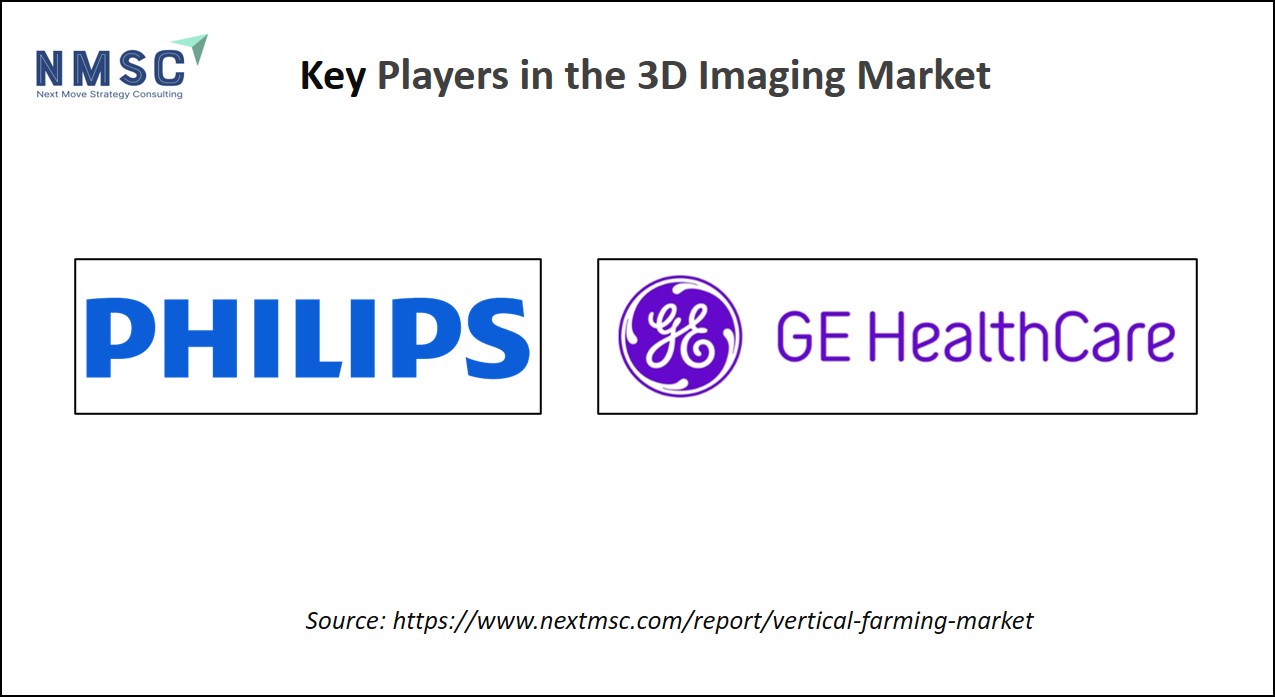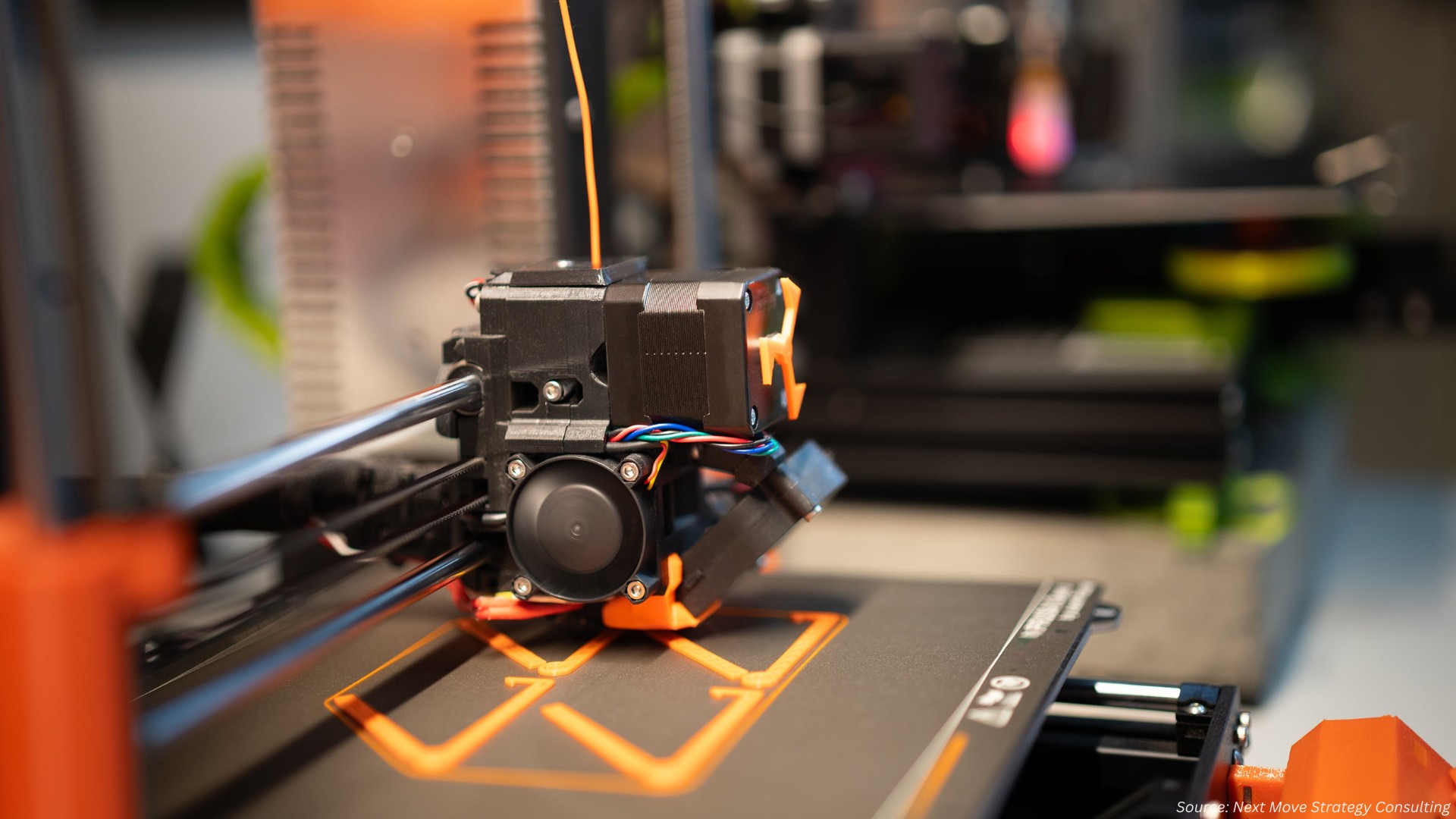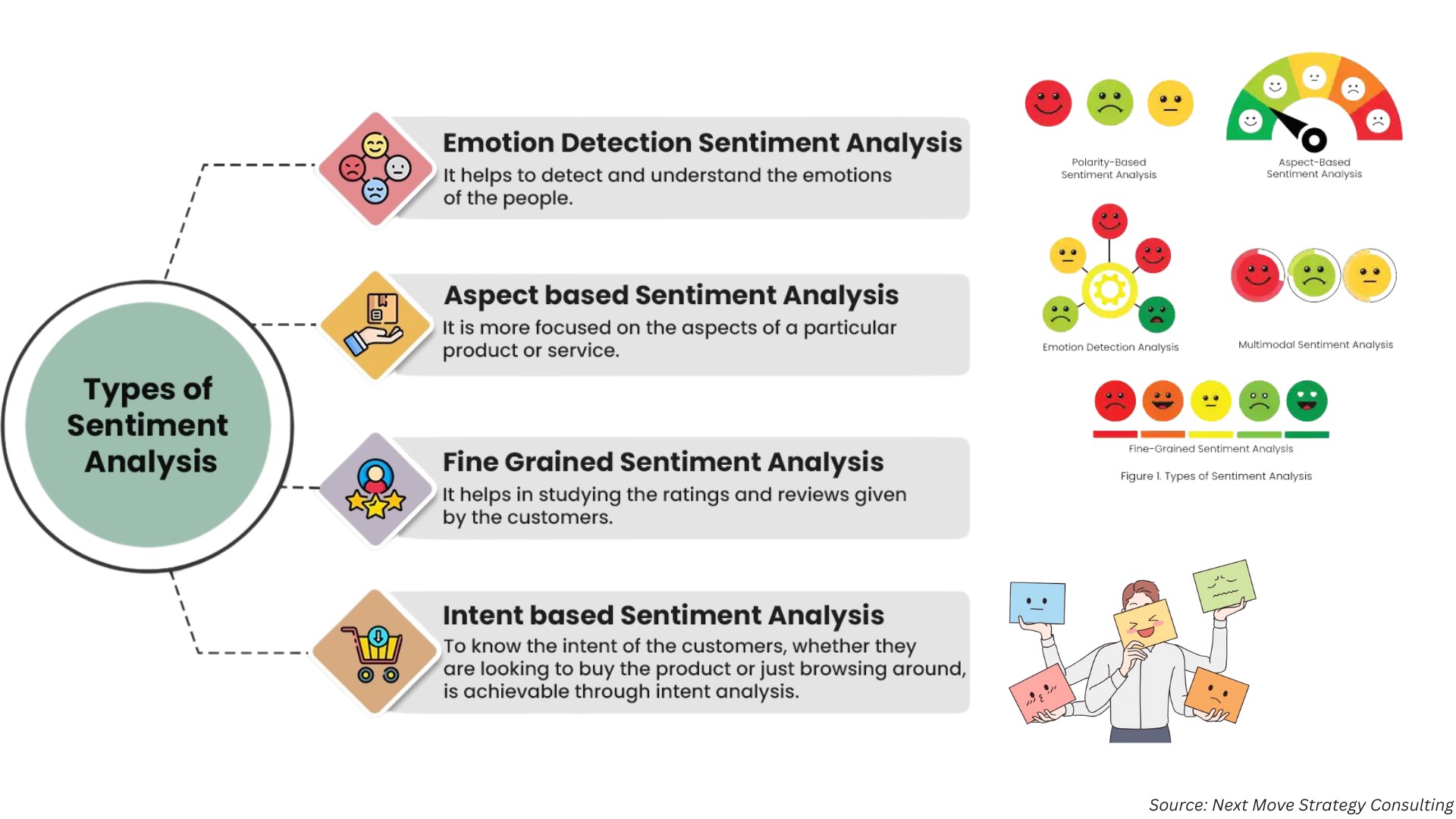AI-Powered Advances Reshape the 3D Imaging Market
Published: 2025-10-06

The global 3D imaging market is entering a new phase of technological and clinical transformation, driven by rapid advancements in artificial intelligence (AI), deep learning, and medical visualization systems. Recent developments in 2024–2025 reflect how companies are leveraging intelligent 3D imaging technologies to improve diagnostic speed, precision, and patient outcomes in critical care and oncology.
This shift marks a strategic move by leading players such as Philips, GE HealthCare, and emerging regional hospitals toward adopting data-driven imaging systems that bridge speed, accuracy, and accessibility in healthcare workflows.
Latest developments in the 3D Imaging Market
-
Philips launches intelligent 3D imaging in Europe to empower faster stroke care, helping physicians save time, brain, and lives
-
GE HealthCare launches Sonic DL for 3D imaging, advancing its deep learning-powered innovations in MRI technology.
-
Cancer hospital installs advanced 3D digital mammography system to enhance early detection of breast cancer.
Applications Across Key Industries
Although medical imaging remains the most prominent domain for 3D imaging applications, its influence spans multiple sectors, including:
-
Healthcare and Life Sciences: AI-driven MRI, CT, and mammography systems are redefining diagnosis and treatment planning by enhancing visibility and reducing false positives.
-
Industrial Design and Manufacturing: 3D visualization enables real-time product modeling and precision measurement.
-
Construction and Architecture: 3D imaging improves design simulations and project visualization.
-
Education and Research: Universities and medical institutions increasingly adopt 3D imaging for anatomy education and biomedical research.
Among these, healthcare continues to dominate due to its growing reliance on high-resolution, data-rich imaging that supports minimally invasive diagnostics.
Key Players and Strategic Developments
|
Company |
Recent Innovation (2024–2025) |
Strategic Focus |
|
Philips |
Intelligent 3D Imaging for Stroke Care in Europe |
Workflow, reducing delays, and ultimately helping to save lives |
|
GE HealthCare |
Deep learning technologies |
These initiatives collectively emphasize the industry’s direction toward speed, precision, and
AI integration, underscoring how innovation is aligning with clinical and operational needs.
Future Prospects and Market Outlook
The future of the 3D imaging market lies in intelligent automation and cross-sector expansion. As companies continue to merge AI and deep learning into imaging workflows, the next phase will see the emergence of adaptive imaging systems capable of real-t
ime diagnostics and predictive analysis.
Healthcare will remain the dominant end-use segment, while manufacturing and education sectors are expected to see rapid adoption as visualization and training tools become more accessible.
Expected developments over the next five years include:
-
Wider deployment of AI-accelerated 3D imaging in community hospitals.
-
Integration of real-time imaging analytics for stroke and oncology care.
-
Expansion of regional manufacturing partnerships in Asia-Pacific.
-
Cloud-based imaging data management for global research collaboration.
Impact of Emerging Technologies on the 3D Imaging Market
Positive and Negative Impacts Shaping the Future of 3D Imaging
The global 3D imaging market is undergoing a profound transformation due to the infusion of artificial intelligence (AI), deep learning, and real-time visualization technologies. These innovations have not only enhanced the operational efficiency of imaging systems but also expanded their applications across multiple industries — from healthcare and manufacturing to education and architecture. However, as the sector advances, it faces a dual spectrum of positive and negative impacts that are influencing its growth trajectory, regulatory landscape, and adoption rate globally.
Positive Impacts Driving Market Growth
The rise of intelligent and automated 3D imaging systems has generated several positive outcomes, particularly in healthcare, research, and industrial applications.
1. Enhanced Diagnostic Accuracy and Speed
AI-powered 3D imaging solutions have revolutionized medical diagnostics by enabling faster and more precise disease detection.
-
Philips’ launch of intelligent 3D stroke imaging in Europe significantly improves emergency response times.
-
GE HealthCare’s Sonic DL platform leverages deep learning to deliver high-resolution MRI scans at reduced scan times.
-
3D mammography installations in regional hospitals enhance early breast cancer detection, improving survival rates.
These advancements minimize diagnostic delays, enhance patient outcomes, and streamline clinical decision-making processes.
2. Expanding Applications Across Industries
Beyond healthcare, 3D imaging is reshaping sectors such as construction, manufacturing, and education.
-
In industrial design, 3D visualization accelerates prototyping and precision modeling.
-
In architecture, it facilitates realistic simulations and efficient design validation.
-
In education and research, it allows interactive learning through anatomical and structural visualization.
This cross-industry versatility is fueling adoption and encouraging investment in multi-sector imaging solutions.
3. Integration of AI and Deep Learning for Predictive Imaging
The integration of deep learning algorithms allows imaging systems to predict clinical outcomes and identify anomalies in real time.
-
Automated data processing reduces manual errors.
-
AI-based reconstruction techniques provide high-quality imaging with lower radiation exposure.
-
Predictive analytics supports early disease intervention and treatment optimization.
These capabilities strengthen the overall clinical and operational efficiency of healthcare systems.
4. Growth in Regional Accessibility and Collaboration
Emerging economies, especially in Asia-Pacific, are rapidly adopting AI-driven imaging due to falling technology costs and public healthcare investments.
-
Hospitals in India are deploying advanced 3D mammography systems for affordable cancer screening.
-
Regional partnerships promote cloud-based imaging data management for international research collaboration.
This expansion contributes to global healthcare equity and enhances imaging accessibility in underserved regions.
Negative Impacts and Industry Challenges
Despite substantial progress, the 3D imaging market faces several challenges that may hinder its full-scale integration across sectors.
1. High Implementation and Maintenance Costs
Advanced imaging systems, especially AI-enabled platforms, require significant capital investment.
-
High equipment and software costs limit adoption in smaller hospitals and clinics.
-
Continuous system updates and data integration tools add to operational expenses.
-
Maintenance and staff training further elevate financial burdens for emerging markets.
This restricts access to technologically advanced imaging solutions, especially in cost-sensitive regions.
2. Data Privacy and Regulatory Concerns
The growing reliance on AI and cloud connectivity raises critical data protection challenges.
-
Patient imaging data requires stringent cybersecurity measures.
-
Compliance with international standards (GDPR, HIPAA) complicates cross-border data exchange.
-
Mismanagement of sensitive medical images could lead to privacy breaches and legal implications.
Ensuring ethical and secure use of imaging data is becoming a top priority for regulators and developers alike.
3. Shortage of Skilled Professionals
Adopting advanced 3D imaging requires highly trained radiologists and technical staff.
-
The rapid technological evolution has outpaced workforce training.
-
Developing countries face a shortage of experts capable of interpreting AI-based 3D scans.
-
Insufficient training programs limit the full utilization of these advanced tools.
This talent gap could slow the implementation of intelligent imaging systems in clinical settings.
4. Integration Challenges with Legacy Systems
Many healthcare institutions still operate on outdated imaging infrastructures.
-
Integrating new AI-based solutions with legacy hardware and software can cause workflow disruptions.
-
Compatibility issues may lead to data loss or processing delays.
-
Hospitals must invest in scalable infrastructure to accommodate continuous innovation.
This integration complexity can delay modernization and reduce return on investment.
Balanced Market Outlook
While the positive impacts of AI-driven 3D imaging—such as improved diagnostics, broader industry use, and predictive capabilities—are propelling global market expansion, challenges like cost barriers, data privacy concerns, and infrastructure gaps continue to moderate growth in certain regions.
The overall market sentiment remains strongly positive, with industry leaders like Philips, GE HealthCare, and regional healthcare innovators shaping a future where imaging is faster, smarter, and more inclusive. The next five years are expected to witness:
-
Wider deployment of AI-enhanced imaging in community hospitals.
-
Integration of real-time analytics for stroke and oncology care.
-
Stronger cross-border collaborations in imaging research.
-
Gradual cost optimization through cloud-based imaging solutions.
Conclusion
The impact of emerging technologies on the 3D imaging market is largely positive, characterized by innovation-driven growth and clinical transformation. While cost and compliance remain key challenges, the long-term benefits—ranging from precision diagnostics to democratized healthcare access—underscore a promising trajectory. As AI, automation, and imaging intelligence converge, the market is set to evolve into a cornerstone of modern medical and industrial innovation.
About Next Move Strategy Consulting:
Next Move Strategy Consulting is a premier market research and management consulting firm that has been committed to provide strategically analysed well documented latest research reports to its clients. The research industry is flooded with many firms to choose from, what makes Next Move different from the rest is its top-quality research and the obsession of turning data into knowledge by dissecting every bit of it and providing fact-based research recommendation that is supported by information collected from over 500 million websites, paid databases, industry journals and one on one consultations with industry experts across a diverse range of industry sectors. The high-quality customized research reports with actionable insights and excellent end-to-end customer service help our clients to take critical business decisions that enables them to move beyond time and have competitive edge in the industry.
We have been servicing over 1000 customers globally that includes 90% of the Fortune 500 companies over a decade. Our analysts are constantly tracking various high growth markets and identifying hidden opportunities in each sector or the industry. We provide one of the industry’s best quality syndicate as well as custom research reports across 10 different industry verticals. We are committed to deliver high quality research solutions in accordance to your business needs. Our industry standard delivery solutions that ranges from the pre consultation to after-sales services, provide an excellent client experience and ensure right strategic decision making for businesses.
For more information, please contact:
Next Move Strategy Consulting
5th Floor 867
Boylston St, STE 500,
Boston, MA 02116, U.S.
E-Mail: [email protected]
Direct: +18577585017
Website: www.nextmsc.com
About the Author
 Karabi Sonowal is an experienced SEO Executive and Content Writer in digital marketing. She excels in SEO, content creation, and data-driven strategies that boost online visibility and engagement. Known for simplifying complex concepts, Karabi creates impactful content aligned with industry trends.
Karabi Sonowal is an experienced SEO Executive and Content Writer in digital marketing. She excels in SEO, content creation, and data-driven strategies that boost online visibility and engagement. Known for simplifying complex concepts, Karabi creates impactful content aligned with industry trends.
About the Reviewer
 Sanyukta Deb is a skilled Content Writer and Digital Marketing Team Leader, specializing in online visibility strategies and data-driven campaigns. She excels at creating audience-focused content that boosts brand presence and engagement, while also pursuing creative projects and design interests.
Sanyukta Deb is a skilled Content Writer and Digital Marketing Team Leader, specializing in online visibility strategies and data-driven campaigns. She excels at creating audience-focused content that boosts brand presence and engagement, while also pursuing creative projects and design interests.

















Add Comment